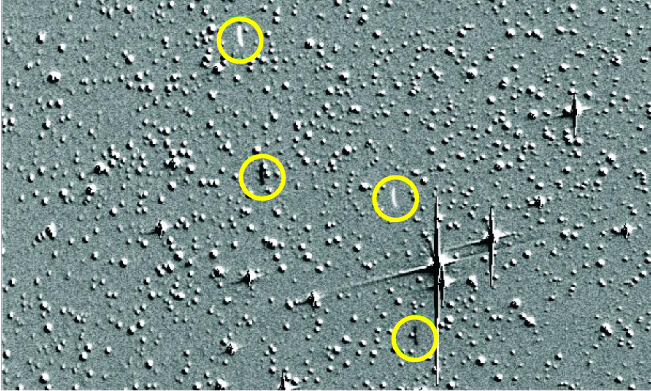Contour Is Lost in Space
DOI: 10.1063/1.1522163
The $159 million Comet Nucleus Tour (Contour) spacecraft, which NASA launched in June to rendezvous with three comets, apparently broke into pieces in August. “There was a big problem with firing the solid rocket booster,” says Robert Farquhar, mission director at the Johns Hopkins University Applied Physics Laboratory (APL).
Contour spent two months in a highly elliptical orbit before attempting to leave Earth’s gravitational well, but after it fired its main booster to break orbit, NASA lost radio contact with the spacecraft. APL scientists hope to regain communication with Contour in December, when, if the spacecraft is still intact, its main antenna should point directly toward Earth. “We’re not very optimistic about the chances of ever recovering Contour again, but we haven’t given up totally,” says Farquhar, who puts the odds at 10 000 to 1.
The science team is keen to recover the spacecraft because “Contour is the only kind of mission that allows you to study the diversity of comets with the same instrumentation looking at different comets,” says Contour’s principal investigator, Joseph Veverka of Cornell University. “Equally important,” he adds, “it’s the only type of mission that gives you the opportunity to intercept a new comet if one of those happens to come in from the Oort Cloud at the right time.” Contour was scheduled to rendezvous with comets Encke in 2003, Schwassmann–Wachmann 3 in 2006, and d’Arrest in 2008. Four different instruments would have taken pictures at infrared and visible wavelengths and analyzed dust samples from the comets’ nuclei during the flybys.
Further evidence that Contour had experienced a major problem came from Jeff Larsen, an astronomer who used Spacewatch’s 1.8-meter telescope on Kitt Peak in Arizona. On 16 August, Larsen spotted two bright parallel moving objects near the predicted position of the spacecraft. “It was within 97% of the predicted trajectory,” reports Farquhar. Because of the reflective characteristics of the spacecraft’s components, the Contour team suspects that the objects are the main part of Contour and perhaps the rocket nozzle or a piece of thermal blanket. Astronomers in California and Hawaii have confirmed the trails and found a third mysterious fragment. In any case, says Farquhar, if Contour is still intact and APL is able to reestablish contact, then “we have enough fuel on board to reach our targets.”
Contour’s malfunction may have occurred for two reasons, says Edward Reynolds, Contour’s system engineer. Either the rocket booster failed and caused an explosion, or the spacecraft couldn’t cope with the acceleration or heat from the booster and suffered a “systemic failure.”
If the spacecraft isn’t recovered in December, says Veverka, “then we’re going to proceed aggressively with a Contour 2.” A duplicate spacecraft would cost approximately $20 million less than the original because all the R&D work for the instruments—which were not involved in the first spacecraft’s failure—has already been done. The major change, says Reynolds, is that “we would redesign the rocket motor from a solid propellant to a liquid-based rocket.” With an April 2006 launch date, the earliest a replacement could be built, Contour 2 could still intercept the same targets.

Tracks (highlighted in yellow) might indicate possible Contour debris.
SPACEWATCH PROJECT, UNIVERSITY OF ARIZONA

More about the Authors
Paul Guinnessy. American Center for Physics, One Physics Ellipse, College Park, Maryland 20740-3842, US . pguinnes@aip.org

